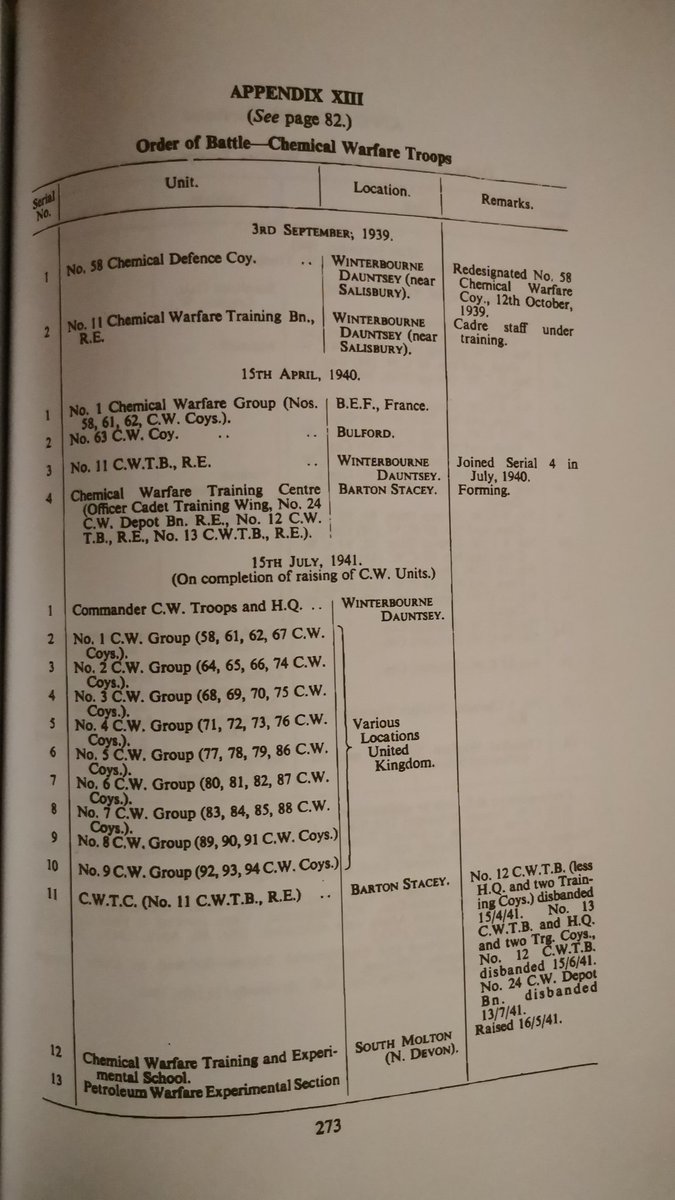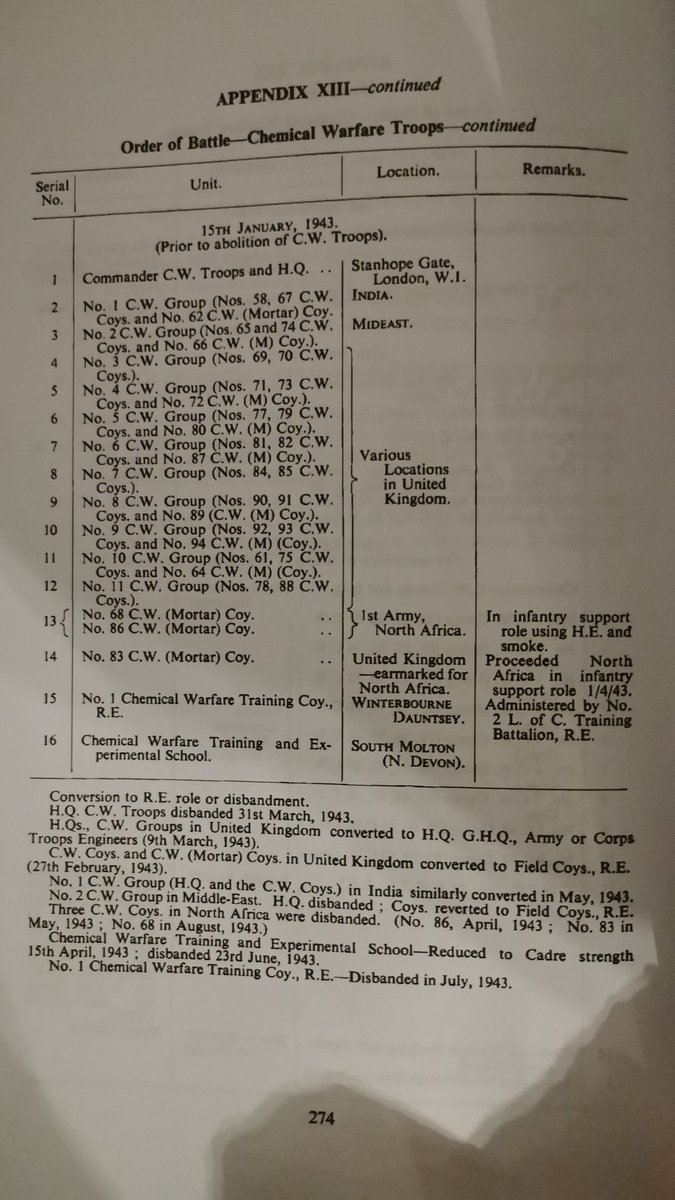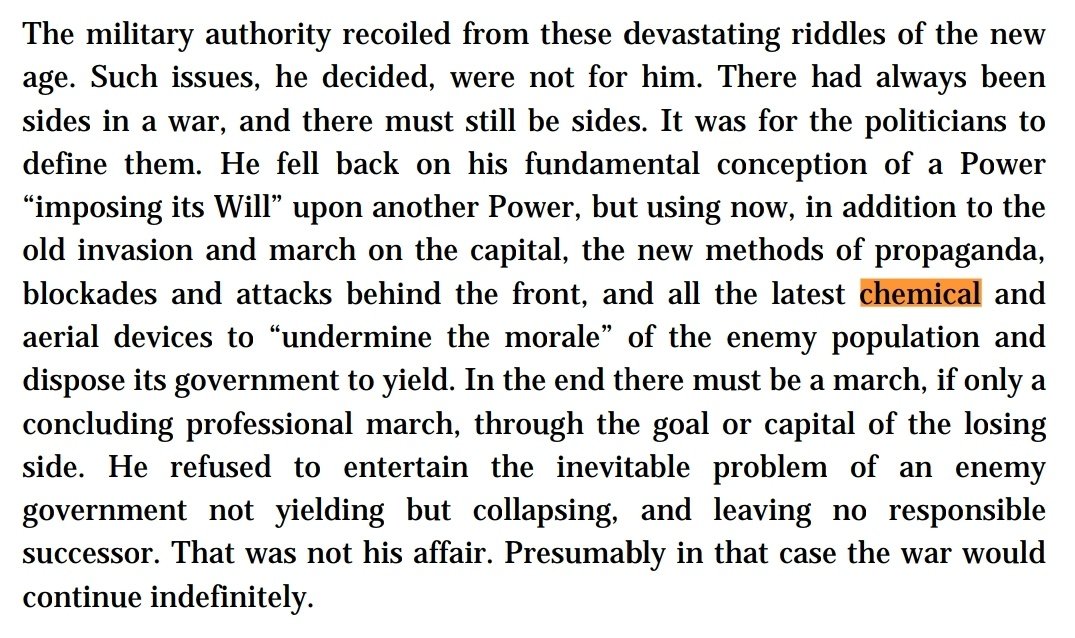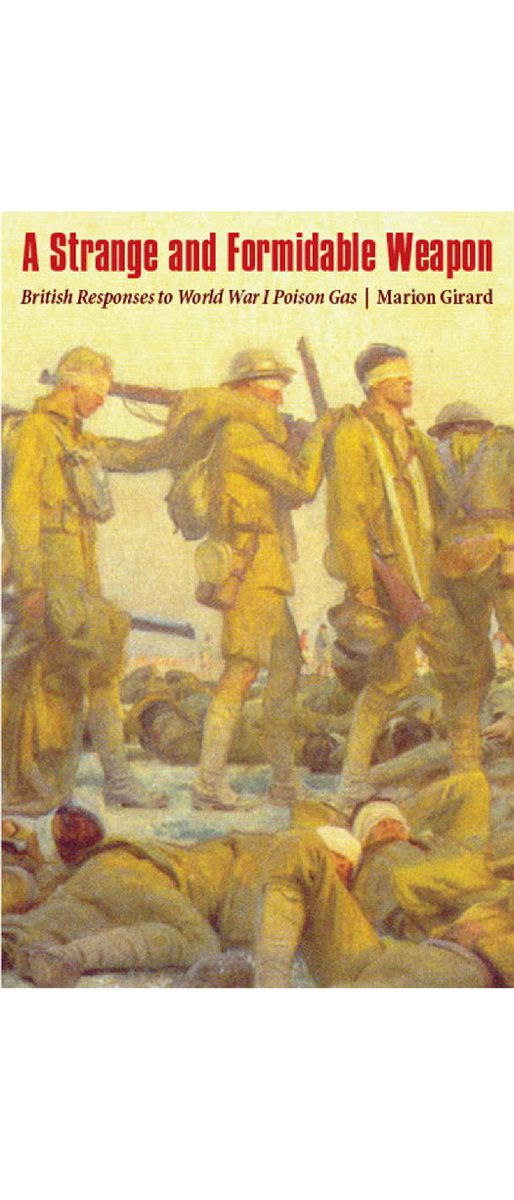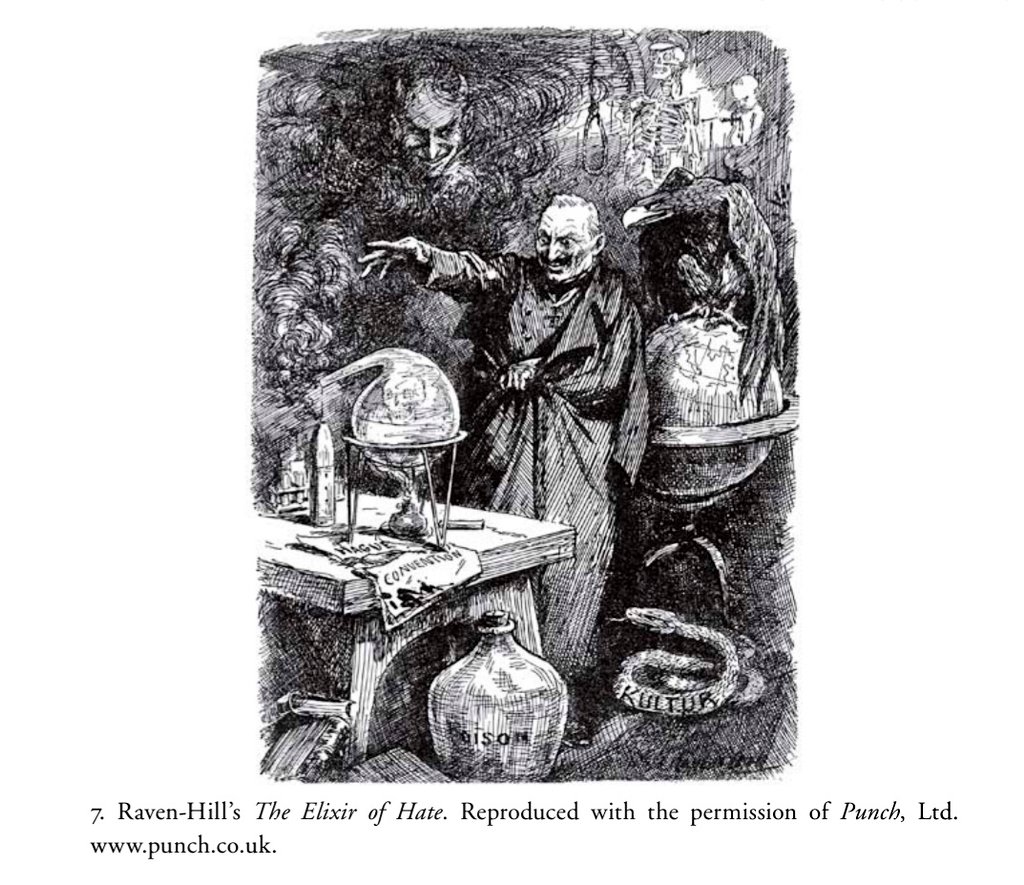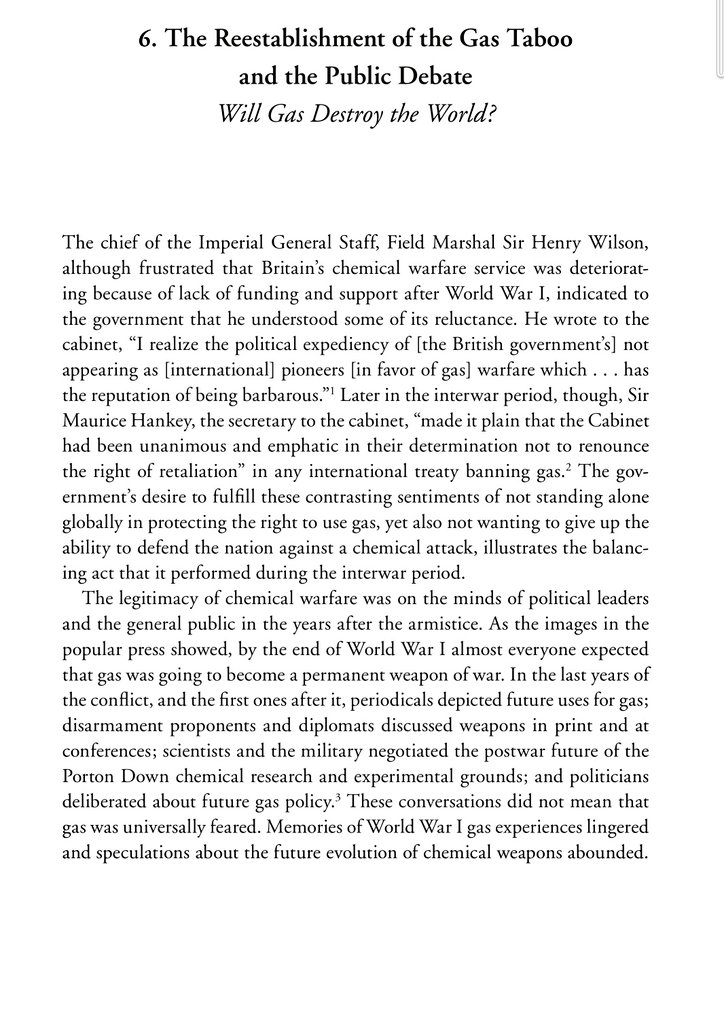So. Figured after completing my (pedestrian) commentary of the literature on the Soviet programme- I would come back to blighty. Happy to take suggestions on where to start on the UK chemical and biological programmes, failing that, first up will be what I find on my shelf.
Its worth noting that this support for research included support for research into 'less lethal' incapacitant agents. There a range of arguments provided for this change in direction. Not least the apparent programmes of adversaries.
The book does a fantastic job at unpacking the range of considerations relevant to policy making in this era- NATO politics, fear of public backlash, defence thinking. All led to a change in governement policy direction towards armament - 'which would be impossible to impliment'
Including the paradox in UK policy from 1963 onwards , that Dr Strangelove was all too familiar with- that of the 'secret deterrent'. How could it function thus, if no one could know about it?
What is surprising? still a drive within aspects of UK government to develop nerve capacity aimed at 'third world' and later RU incursion into Europe, despite earlier resistance- as well as to pursue an alternative incapacitant to the US 'BZ' as late as 68.
All in the context of apparent ambiguity and malaise on this issue across government which had set in almost a decade before. Drift indeed.
By this point. The prospect of arms control,held an increasing appeal within the UK at least. This was in contrast to the prospect ongoing struggles to develop unpopular weapon systems which were a poltical liability domestically- and of dubious value to UKs overall security.
The book also hilights the pivotal role that states such as Japan played in sketching out and supporting a move towards what would eventually become the CWC in this period.
Overall then, a must read if you are interested in the history of UK CW politics generally, or in the character and role of nerve agent weapons and doctrine Post-WW2.
And of course, I couldn't resist looking at the appendix before I started. Quite the table. UK chemical warfare units-'39-'45
And this monstrosity (amoung other CW systems which appear in this history). Gas delivery system. Developed and used in training by British Army, But considered and retained for battlefield use during WW2. 

And we begin. This book was produced in 1951, by the The War Office 'to preserve the experience gained during the Second World War'.
What a resource. The counter-factuals of WW2 battlefield CW use in Europe are bleak as it comes. It is sobering to see capicities, calculations and 'what ifs' laid out like this. 

The work begins with the Geneva Protocol of 1925. And Britain's policy to seek assurances from adversaries that they would not employ CW. The prospect of large scale ariel dropped CW against both militaries and civilians was a reasonable fear in 1920s and 1930s.
Well's of course contrived the idea of 'The Permanent Death Gas' which decomposed over long periods- an idea mocked by J. B.S Haldane in this era. But we know that chemical weapon use, for example in Vietnam, has led to more subtle, but long lasting effects on peoples indeed.
Some of Well's visions proved more fanciful, but his book and how it deals with chem and bio certainly merits a special at some point.
In 1940, the UK war Cabinet was giving serious consideration to how to retaliate in-kind to German use of CW in the low countries. This included high-level spraying of Mustard over occupied civilian areas, as well as bombing of enemy staging points.
There was some discussion of how to mimimise civilian casualties. But, massed suprised attack, relying on essentially indiscriminate and wide spread ariel spraying of mustard would have been the only real means of effective retaliation available at that point.
Events however, took over, Germany- confident of in kind retaliation ( and I suspect for more operational and strategic reasons) did not employ- and so no final decision was made, in relation to this scenario, to grant UK Chiefs of Staff authority to launch retaliatory attacks
This is an example of one of the UK spray weapons which could have delivered Mustard. This could have been done at low, or high altitude dependent on aim. 
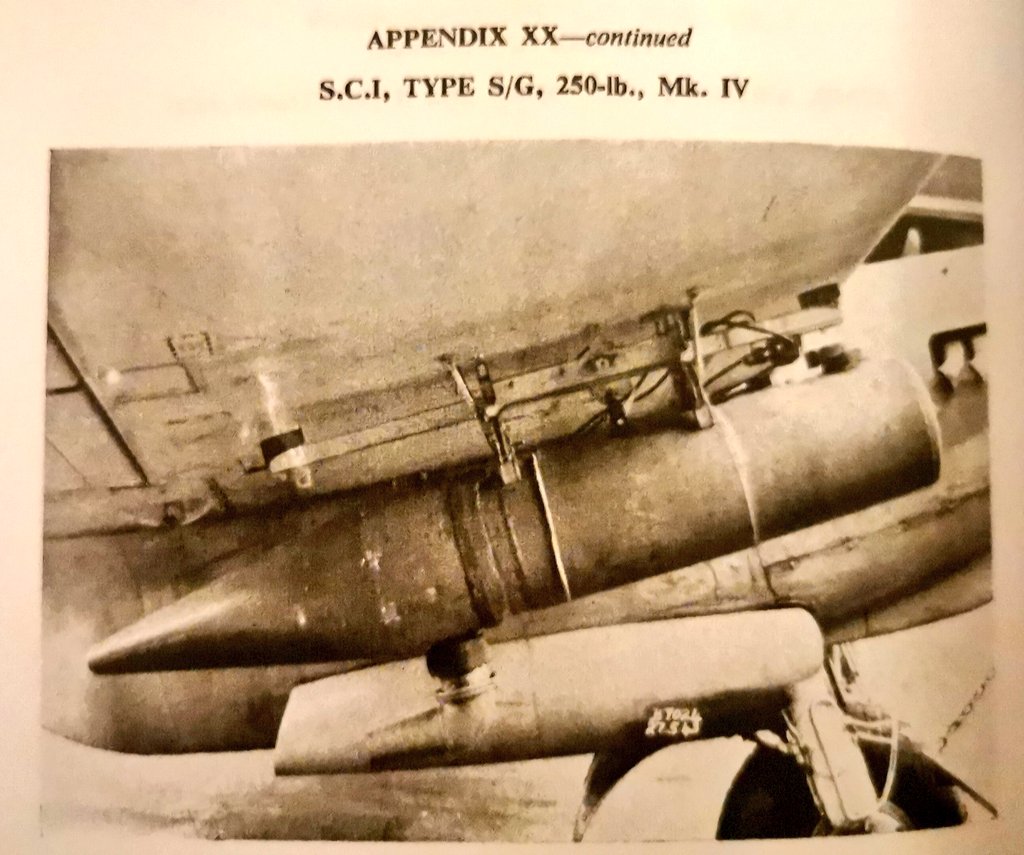
Not to be confused ( as I had a moment ago) with the 'flying cow' also a spray weapon, but this one detached from the plane first before spray emitted 

So, turns out the British Expeditionary Force had the majority of the UKs CW. They had to abandon thier Livens projectors at Dunkirk- but managed to secure the above spray systems which were secret at the time. They also abandoned a metric-feck-ton of defensive equipment.
The UK also managed to evacuate the majority of its CW stocks which had been in France.
At the outbreak of war, almost the entirety of UK CW production was happening at one place- Randle, Wigg Island Cheshire. The Germans would have spotted the plant from a proverbial mile off. Wigg Island 1947.
maps.app.goo.gl/DC6ztr63P2GNkT…

maps.app.goo.gl/DC6ztr63P2GNkT…

There were other sites in the UK where mustard, and other chemical weapons were produced and stored - which supplemented and superceded interwar sites. Such as this one, in Sutton Oak. Associated with all these plants are some great local historians. suttonbeauty.org.uk/suttonhistory/…


@rowsofshelves But will be interesting to read if this was the case when I get to the history of German CW.
But in 1940, spray delivered Mustard was the main relevant CW capability, and that was almost entirely dependent on the lone Wigg Island site. The UK did have other stocks in reserve, including mustard bombs stored 'in the welsh hills' but these apparently provided little comfort
By latter 1940 then, the UK, although having remarkably recovered it's CW stocks at Dunkirk, and having new production sites coming online- still suffered a sense of unease about the possibility of German first use, to which they could not convincingly retaliate.
The UK position, was that German calculations would be based on a) UKs ability to respond in kind to CW use and b) military and civilian defences against CW. Luckily then, on the whole, that both civilian and military CW defense was, and importantly, appeared so strong. 

The reported UK plans for retaliation to german use of CW are harrowing.
In 1940-41:Two scenarios for German first use were central to planning. A) German invasion of UK, including use of CW against civilians B) German use of CW to demoralise UK civilian population.
If a): the uk would have 'retaliated in kind on the german population...on the largest possible scale at the first favourable opportunity'.
If b) a mix of High Explosive, Incendiary and CW weapons would be employed as part of an immediate retaliation. But no detailed plans for this scenario were drawn up.
In the winter of 1940-41 the UK government was insecure about absence of retaliatory potential. It considered some public posturing, as a stopgap measure untill production came online. But decided to keep schtum.
CW attacks on British soil were not the only consideration in. 1940-41. In the Middle East- UK was 'entirely devoid of any means to wage CW warfare'.
The UK had reports that Italy was consdering use of CW against Ethiopian forces ( the facists had already done so in 35'-36'). And this led to some pretty grim reasoning from UK about their stance in the event it happened again.
This book suggests that policy at the time would have been to make no deterrent statements on behalf of the Abyssinians, and turn a blind eye to use had it occured as UK retaliation 'might have led to wide spread gaswarfare' for which the UK felt ill-prepared.
Interestingly, the UK seems to have opted for more a more subtle deterrent strategy - making threats to the Italians by 'underground means' about it's commitment and ability to retaliate. In the event, the UKs bluff would not be called.
The Italian conquest of Abyssinia 35'-36' is rarely discussed now But the unspeakably cruel tactics of CW use in that conflict against civlians would have been fresh in the minds of UK military planners. 

This book gives incredibly detailed insights into UK domestic gas defence design and implimentation. Went far beyond the infamous masks. 

Also tracks preperations for retaliatory use, and assessments of how likely Germany were to employ CW against Allied forces. Will be interesting to come back to this when looking at the History of the German programme.
This also extended to Common Wealth forces- in Iraq and India for example. Including the scale of defensive, and to a lesser extent retaliatory capabilities.
The study covers how UK increased production, the decisions about where stocks were to be kept, collaboration with allies, as well as shifting assessments of capability and intent of Germany and Japan later in the war.
Calling it a day on this as a read through as the study moves into more technical areas- Only so much I can take in about the amounts of gas ointments, dressings and PPE different units had 😂 Will shortly be starting on the next state.
So they aim of this book is to provide a broader social history of gas warfare in WW1- how it was understood, and the various ways it was framed in different social and political strata. It's a big ask for such a short book. Always tempting to 'skim' social depictions...
And not underpin that analysis with a deeper historically informed perspective. So yes - love the aim, but see it with some trepidation.
The work makes the interesting point - that it was the ?only? weapon system prohibited by the Hague Convention which had not been used in warfare already. It was a novel horror. And one which emerged with stigma.
The work emphasizes that the emergence of the taboo was neither instinctive or inevitable -but that one established it's effect has been profound.
The work situates the emergence of the norm in broader historic themes of barbarity, terror, and desensitisation.
This then opens up the analysis to allow for a multifaceted understanding of the character emergence and manifestation of the norm.
Already there are similarities and contrasts that can be made with works which emphasise to a greater extent racism and more rationalist approaches to understanding the contingent and caveating of the norm in practice.
All can explain exceptions , but each tends towards different types of explanation, for example with regard to gas use in the interwar years.
In reality of course each is trying to grapple with a complex phenomenon -which escapes any theory which seeks to provide an explanatory or more holistic account
All dimensions described in the literature are at times observable, but the historical significance of them varies greatly at different political moments. They are each then always playing out in history - but with varying means and effects.
Understanding of these weapons in any era varies greatly between individuals and social groups. And has a complex relationship to the broader norms, policies and power structures of the era.
So, in essence what I like about this general approach is that it allows us to understand that at any given moment the practice of chemical warfare sits as part of a much broader social, institutional, material and political diorama
Maybe one day I will be able to draw it in a massive schematic for a given era- and feel I understand it. Then someone will eagerly be able to tell me that holism gets us nowhere.🤣
But maybe @LincolnSheff will be able to do a better job in this type of thing - he's looking at AI. You might want to check his stuff out
@LincolnSheff Tom Hobson and Anna Roessing have also been looking at this type of approach. Tom just wrote up his PhD on US military tech under Obama. And Anna is looking at cyborgs!
Another dimension addressed is how the UK balanced a desire to condemn Germanies first use of Chlorine- but also be able to retaliate and innovate. With each innovation attracting fresh condemnation, but also providing justification for a like-for-like or comparable response.
The ratcheting of course was complex; there were multiple combatants and fronts. Churchill advocated strongly for chemical weapons against Turkish forces at Gallipoli. And this makes for a good case study of considerations given to this.
What is interesting is that when generals in different theatres requested chemical weapons, that refusals were often framed in rational, pragmatic and technical terms - but broader strategic and political issues clearly played a role in specific decisions on different fronts.
The development of standardised gas drills and equipment is discussed in detail. As with today, training materials walked a fine line between emphasising the danger of gas, and the effectiness of drills and equipment at dealing with it.
There is a survey of training manuals. As well as the way in which civilian scientists and medics were leveraged in the development of protection and treatment. Worry not ..you will be getting lots of snippets of these in months to come...
Also the need to rapidly develop standards for assessing the health impacts or gas - especially when it came to decisions to bring injured soldiers home.
Gas injuries were no guarantee of being sent home. Individuals reacted to exposure differently and often developed secondary complications. As a result many badly injured men (some of whom would never work again if they survived) were patched up and returned to the front
I doubt this was unique to gas injuries. But with only an emerging medical understanding of gas injuries, it was likely that here this issue was particularly acute.
It is worth remembering that while there were rapid medical advances (such as oxygen therapy) were emerging- that even retrograde practices, such as blood letting, were still being suggested as a last resort, to doctors desperately seeking to deal with horrific new injuries.
Prevention then, was certainly better than cure. And the former was an area which appears to have advanced more quickly in response to new gasses.
The book also does a great job at outlining how government worked with industry in overcoming production challenges - focusing on an early cyanide containing agent, which the British would ultimately abandon in the advent of Mustard.
In the discussion of moral reflections at the time, reference is made to a contemporary comparison between vitriol throwing (infamous in the 19th century), which I had not seen before 

While ethical qualms appear to have been minimal within much of industry. Much more important were concerns about loss of trade secrets,and the often informal and unprofitable contracts sought by government. In additional to worker safety and broader labour relations.
Factory workers at production facilities had significant exposure risks . Facing both chronic exposure at low levels, as well as the acute hazards of working with high-volumes of concentrated war gasses in closed environments. Cleaning equipment was especially dangerous.
There were several major production and filling sites, including at Avonmouth near me. And the one reviewed here. Many women were employed at these factories. banburyshire.co.uk/banburys-wwi-m…
When retelling the history of CW in WW1 we often forget that it was discussed in many ways at the time. It had a range of symbolic values. Discussion at the time, as with today - varied from more detached tactical and technical discussion - to more moral lenses.
In addition, as then as now, the depiction of CW in photographs was distinctive to conventional munitions.. it was harder to capture the weapon in use, and the physiological and effects of course were also often hidden.
As well as the threat of CW as a new technology- on the battlefront and against civilians.
There were complex norms in place in the UK in relation to press coverage under DORA. Work was not reviewed before publication, but the source info was - and publishers failing to adequately self censor could be punished.
It's fascinating to see the media negotiating the need to demonise the enemy for using CW- and to justify retaliation. 
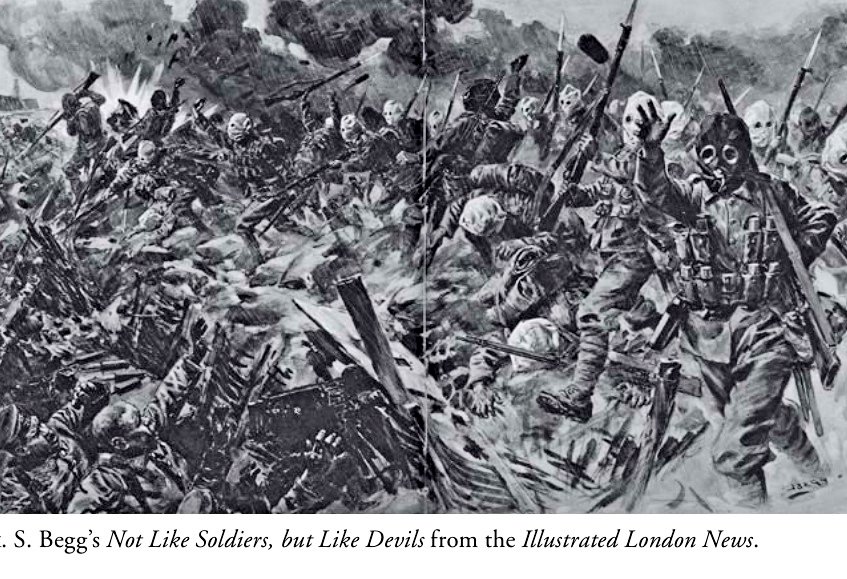
The chapter does a good job at outlining how the interwar context was a period in which board societal exposure to the practice and effects of gas warfare fed into interwar public debate - and concern about the threat to civilians.
This debate of course was polarised to some extent between advocates of the weapon, and those pro disarmament.
It is certainly an interesting period for those interested in the morality of specific types of weapons- there was sustained public debate between scientists, representatives of various gas services and veterans of WW1.
It is fair to say that much debate was well reasoned, but based on flawed assumptions about warfare at the time - and would also quickly become dated by advances in chemical warfare.
• • •
Missing some Tweet in this thread? You can try to
force a refresh


